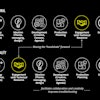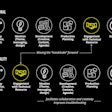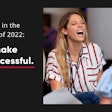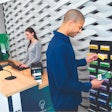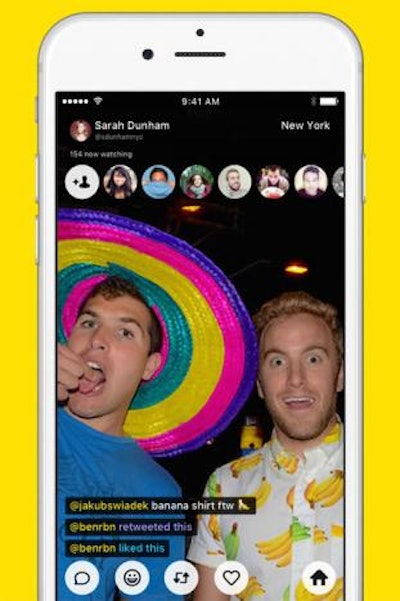
Meerkat launched in late February, and just two weeks later it became the breakout app of South by Southwest in March, as dozens of the conference attendees used it to share live streams from the event from their phones and other mobile devices. The buzz only grew when, on the first day of SXSW, Twitter cut Meerkat’s access to its social graph (in preparation for the launch of its own streaming app, Periscope). The app has released several updates, including the ability to create instant polls for viewers and to allow someone else to take over a stream for 60 seconds.
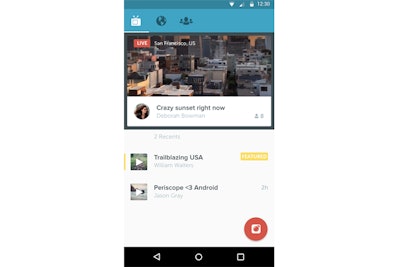
Live-streaming app Periscope launched in March, shortly after it was acquired by Twitter. Apple recently selected it as its iPhone App of the Year. The app, which is available for Apple and Android devices, allows anyone to share live video and audio from an event from their mobile device. The app now has more than 10 million accounts.
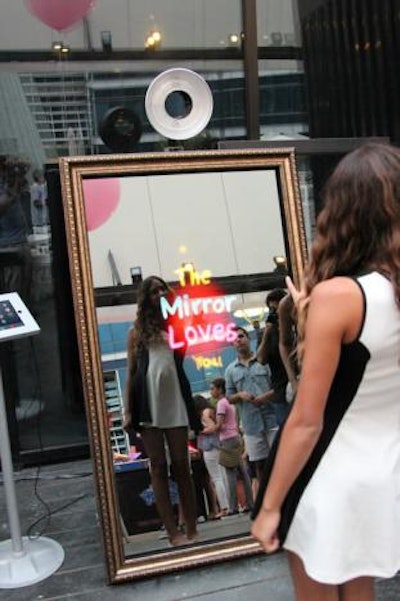
Foto Master's Mirror Me Booth is a new portable photo option for events, with a camera embedded behind a mirror. As users step in front of the mirror, colorful animations appear on the surface with instructions such as “touch here to begin” and “say cheese,” and the animations can also include sound so they appear to talk to the users. Hosts can customize the experience with specific instructions—asking people to wave their hands or to scream, for example. Guests can also sign the mirror to have that signature printed on the hard copy of the photos. The 65-inch mirror comes with a selection of frames. It launched in April.
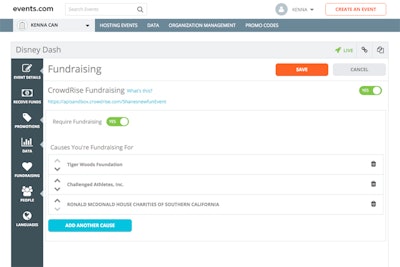
Events.com is an event management platform that launched in February. The cloud-based application includes registration, social media, and communication features to simplify events for organizers and attendees. In August, the company announced a partnership with CrowdRise that adds fund-raising capabilities to the Events.com system.
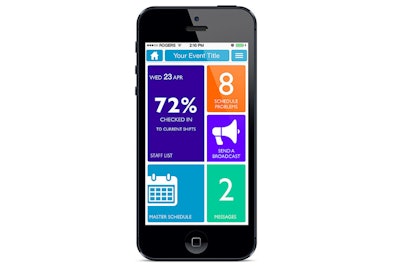
Communication is a key component of a successful event, and InitLlive is focused on streamlining the process for planners. The mobile and Web app launched in January to coordinate real-time communication and scheduling among event staff. Volunteers and staff can sign up for shifts, and the system can automatically send reminders. At the event, the planner can use the app to check people in and to send instant messages.
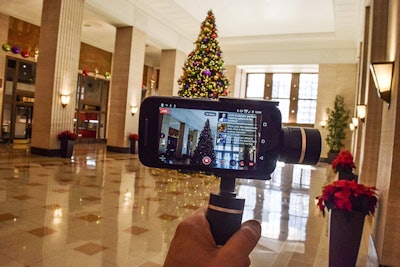
Georama is a new option for planners who want to check out destinations, venues, entertainment, or other elements for their events without having to travel to see them in person. The company has nearly 200 guides around the world who provide private, customized tours using either a smartphone or a GoPro. Tours are conducted in real time with two-way audio so those watching can ask questions or request a closer look at something. The stream is private, viewable only with an access code, and each tour is also recorded for viewing on demand.

In October, Facebook began rolling out several updates to its event tools intended to help hosts create and promote events more efficiently. The updates include the ability to schedule an event to publish at a future time, the creation of QR codes that can be shared online or in printed materials, and the addition of “interested” as one of the RSVP options. Facebook Events also now allows organizers to add co-hosts to events and to add their events to the calendar on their corresponding Facebook pages. In early December, Facebook began rolling outs its live video tool to iOS users (it was previously only available to celebrities). Unlike Periscope and Meerkat, Facebook live streams don’t disappear after 24 hours—they stay in the host’s timeline until deleted.
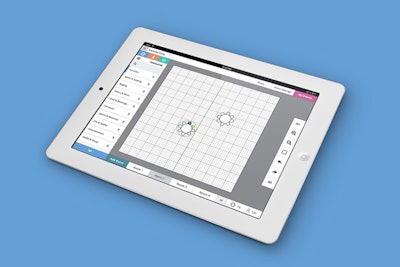
In October Social Tables released a new app, SiteInspector. The app is intended to help planners catalog, compare, and share site inspection information such as capacities, audiovisual options, budgets, and food and beverage details. The system can store notes, photos, and videos. It also includes a tool to test Wi-Fi strength at a venue. The existing Social Tables platform was also updated to include floor plans from more than 10,000 properties.

Eventbase, a mobile technology platform for events, has created new tools focused on lead retrieval and creating connections between exhibitors and attendees. The system now uses iBeacons around exhibit booths to detect nearby attendees based on industry and interest tags in their profiles. Exhibitors receive notification of relevant attendees in their area to help them get meaningful content in front of those attendees as they pass by. The company unveiled the new tools at I.A.E.E. Expo! Expo! in early December.
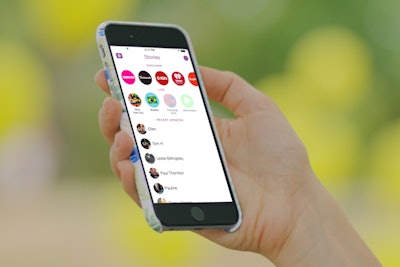
Snapchat unveiled updates to its Live Stories feature in November. Previously, the Stories displayed a selection of snaps from a particular location—such as a festival, concert, sports match, or other event—with the images curated by Snapchat. That curation will continue, but now the new Story Explorer gives users the ability to see an event from different vantage points. By swiping up, users see multiple shots of the same real-life moments.
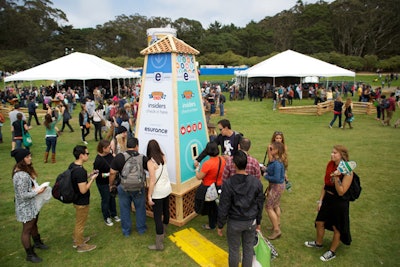
In July, Event Farm acquired ClearHart, a digital innovation agency that specializes in bridging online and offline engagement for events. ClearHart’s work has focused on turnkey wearable technology using tools such as R.F.I.D., N.F.C., and Bluetooth low-energy. Event Farm is using that expertise to develop an experiential platform that it says will “bring the Internet of Things to live events and experiences.”
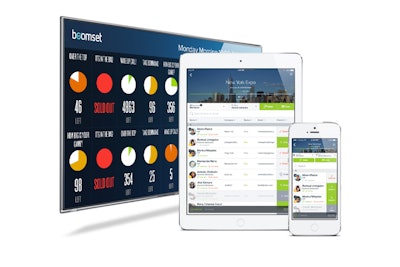
Boomset added several new features in 2015, including session scheduling, which can be displayed on smart boards so attendees can edit their schedules in real time. The system also helps planners monitor available seats in every session with real-time updates. Boomset also added lead retrieval functions to its app so guests and vendors can exchange contact information without additional equipment. Exhibitors can scan badges using their smartphone’s camera, add notes, mark leads as “hot, warm, or cold,” and search leads by name, date scanned, or priority level.
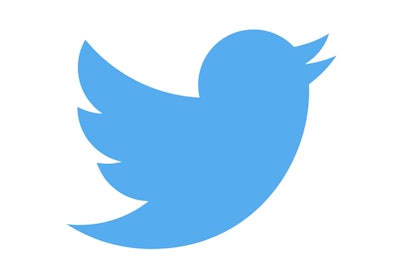
Twitter is making it easier for users to find all the tweets around big events or topics, without needing to follow those accounts or use a hashtag. In October the company unveiled Moments, indicated by a new lightning bolt icon. Tapping it opens a new tab that shows tweets about big stories unfolding on Twitter, such as “conversations between world leaders and celebrities, citizens reporting events as they happen, cultural memes, live commentary on the night’s big game, and many more,” according to the company blog. Moments are assembled by Twitter’s curation team and contributed by partners like Buzzfeed, Entertainment Weekly, Getty Images, Mashable, The New York Times, and more.
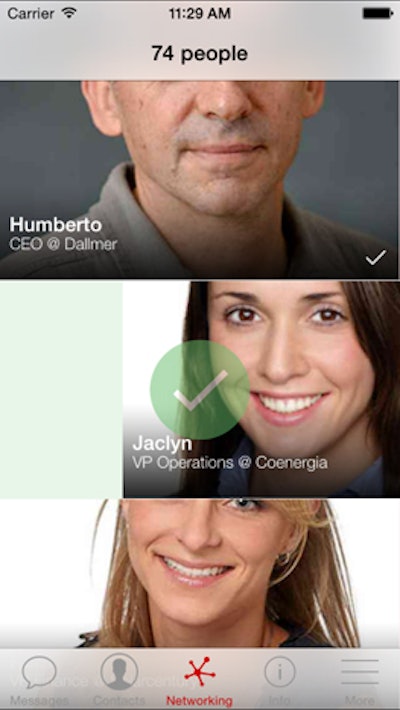
Topi unveiled several updates to its mobile app in 2015. A new networking tool takes inspiration from dating app Tinder: users swipe across a profile to indicate interest in meeting that person. If the recipient accepts the request, the app creates a chat room where the two can communicate. The app also launched PeopleRank, an algorithm to automatically suggest the most relevant people to meet at an event. The company is now testing two additional services—Bitcoin payment for registrations and an integration with Uber to allow attendees to share rides to and from conference venues.
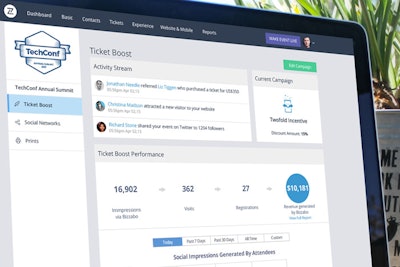
Event management system Bizzabo launched Ticket Boost this summer as a way to create incentives for attendees to promote an event. When guests register they received a unique discount code to share with others. If someone signs up using their code, the attendee receives money back on registration.
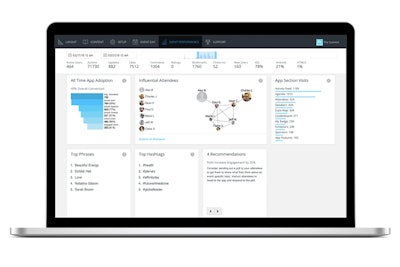
In February, DoubleDutch launched “Event Performance,” a new analytics platform that uses data from the DoubleDutch mobile app to help planners monitor content and engagement metrics as an event is taking place. The system allows planners to see top search terms in the app, trending hashtags, and popular discussion topics. It also has tools to help planners understand how their guests are using the app by tracking every stage of adoption, from the invitation email to log-ins and actions within the app.
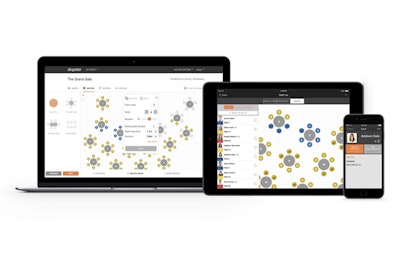
In June Zkipster launched a new seating feature for its guest list app. Planners can now design and collaborate on seating charts in real time using floor plans from several hundred venues with more coming in 2016. The system can also create custom plans at no additional cost. Hosts can use the app’s drag-and-drop feature to assign guests to seats and to make changes instantly.
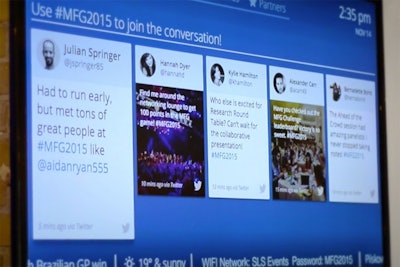
On December 1, EventMobi unveiled its new “Live Display,” an enhanced social wall for events. In addition to a live feed of social media tied to an event, the display can include schedule and speaker information, games, alerts, sponsor information, and a ticker showing world news, weather updates, and customized information such as the event’s Wi-Fi password. Content on the display is synced with content in the EventMobi app. Also this year, EventMobi created a new platform that allows hosts to create games for their events.
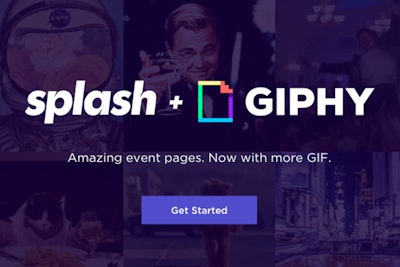
In August, Splash unveiled an integration with GIPHY, a search engine for animated GIFs, so planners can easily add a GIF to their Splash event page and email invitations. Splash also released an update to its email communication tools. The new “Event Email Sequence” is a dashboard with five preloaded emails that are tied to specific stages of the event cycle (save the date, invitation, and thank-you) and can be set up to send automatically. The dashboard also provides data such opens, bounces, and clicks for each email.
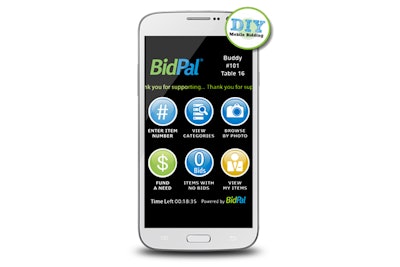
In March, BidPal introduced a new D.I.Y. mobile bidding option to manage fund-raisers. The system provides the same software and services of a BidPal full-service event without the additional cost of on-site staff or peripheral hardware.

Tagkast has added animated GIFs and green-screen options to its branded photos sharing system for events. Using the green-screen technology, planners can customize the background for their guests’ photos. Tagkast also offers a kiosk option for hosts that want to use the system without additional staff.

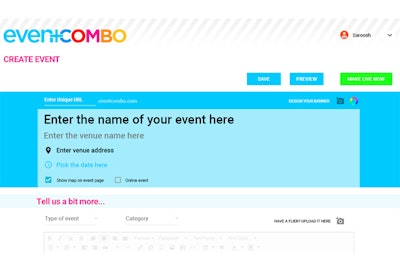
EventCombo is a ticketing system that allows hosts to bundle event tickets with other things attendees may want to purchase, such as meals from nearby restaurants, parking, merchandise, and more. Merchants use the system to create and manage the deals they want to offer, and the system matches those deals with relevant events. Organizers receive a portion of the money generated by the sale of those items. Events that use the system are also listed on the EventCombo website and promoted through social media. The system launched June 6 and additional updates are planned for the next month.
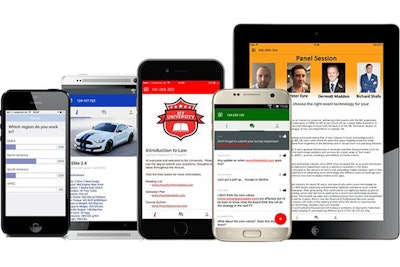
Meetoo, the real-time polling and messaging app from Lumi, released several updates in late May. Moderators can now disable the creation of participant profiles so audience members can use the app anonymously. The profile settings can be changed instantly so hosts can quickly adapt to changes in the mood or circumstance. Additional updates allow hosts to customize the app by adding instructions, speaker biographies, agendas, logos, photographs, and more.
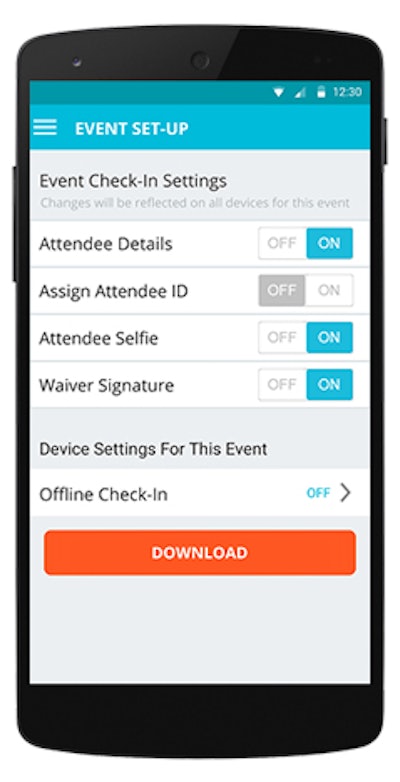
The new Event Assistant App from Events.com is intended to streamline the check-in process for hosts and attendees. In addition to a manual search by name, organizers can look up participants using voice recognition or by scanning a QR code; a quick “swipe right” then checks that person in to the event. Data refreshes in real-time and syncs across all devices to prevent duplicate check-ins. The app can also function in offline mode. Events.com launched the app in May. For now it’s only available for Android devices.
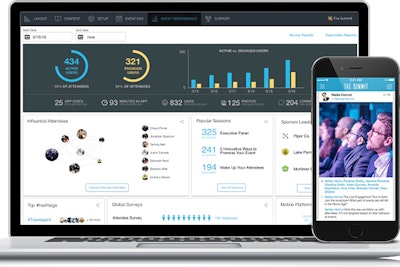
On June 9, DoubleDutch updated its Live Engagement Platform, which debuted in May as a system of applications that allow hosts to manage attendee participation, share sponsor and exhibitor communications, and analyze data. The new updates make it easy for hosts to manage dozens of events in one place, and to duplicate content from past events to save time. For attendees, the system can provide recommendations about sessions to attend and people to meet to personalize their event experience. It can also be used to streamline the scheduling of meetings with other attendees. The system tracks attendee behavior across the event so hosts can use that data to provide personalized follow-up.
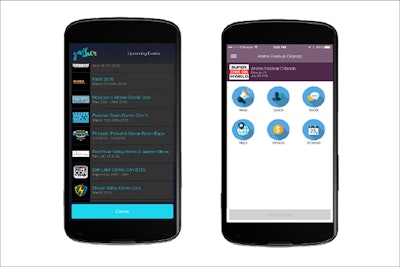
Planners can use Spingo’s new Event Master platform to manage a variety of aspects of their events. The system can handle ticketing, scheduling, interactive venue maps, exhibitor services, volunteer management, and analytics regarding customer acquisition and marketing. It can also be used to coordinate details for V.I.P.s, such as airport pick-ups, flight information, and expenses. Event Master also allows hosts to create a custom event app that attendees can use to purchase tickets, view schedules, and interact with other guests. The system debuted in February.
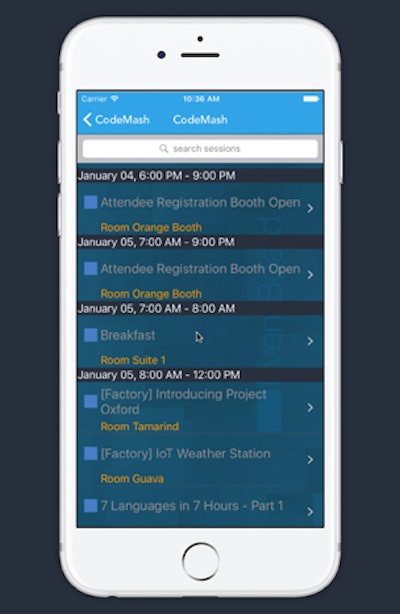
In January, EventsXD relaunched with a new business model that makes its multi-event app system free. The app can include digital floor plans, color-coded agendas, attendee communications, speaker information, surveys, social media integration, and digital materials. For additional fees, organizers can add premium features such as a sponsor showcase, push notifications, log-in codes, and more. EventsXD also has a new website feature that allows attendees to find and interact with events through their browser as well as the mobile app. Ticketing will be added to the system soon.
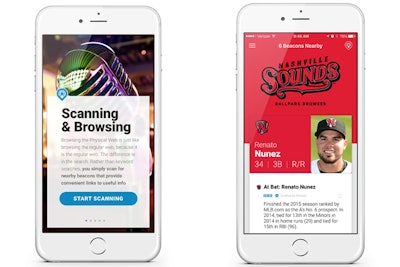
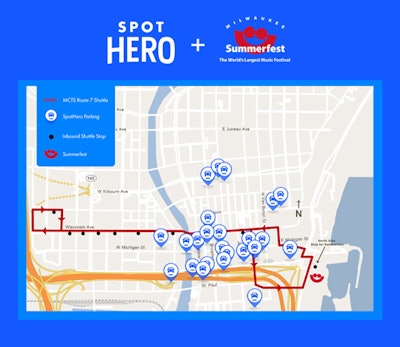
In mid-September, SpotHero launched a new service to help planners provide parking for their guests. SpotHero for Events allows guests to find and reserve parking in advance through a mobile app and website. The system operates in real time to reflect street closures and construction. Planners can embed the custom parking landing page on their event’s website and in emails and other communication materials so guests can reserve a spot with one click. The system is currently available in 15 cities across the United States, including Chicago, Los Angeles, New York, and Washington, D.C.
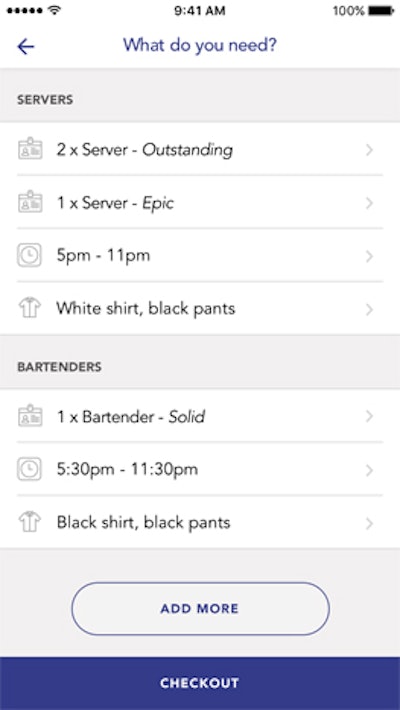
Jitjatjo is an app to facilitate on-demand temporary staffing for venues, caterers, events, and more. When a user requests staffing, the app handles the entire process from hiring through payroll. Requests can be made as late as an hour before a scheduled shift, for examples to replace people who have called in sick or simply don’t show up. The app analyzes requests and selects talent based on their experience, location, skills, availability, history, and ratings. Users can also request specific attire, include details regarding an assignment, and send messages in the app without having to share their contact information. Jitjatjo launched October 18. Currently, the service is only available in New York, but the company is making plans to expand to other cities.
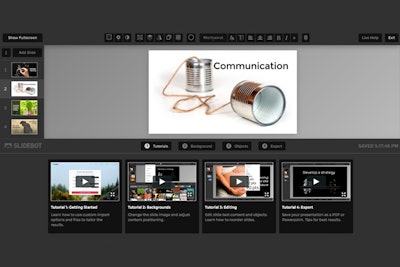
SlideBot is a tool to help people create engaging presentations. Users either type content directly in SlideBot or import an existing PowerPoint or Word file. The system uses “natural language processing” to understand the presentation’s content and then searches its database of more than 25 million images to find those that are most appropriate. After identifying images, SlideBot uses thousands of design rules to place the text on the images. Users can also choose from more than 800 icons and symbols to customize the presentation. Users can present directly from SlideBot or they can export a fully editable version to Powerpoint. The system costs $19 per month or $179 per year.
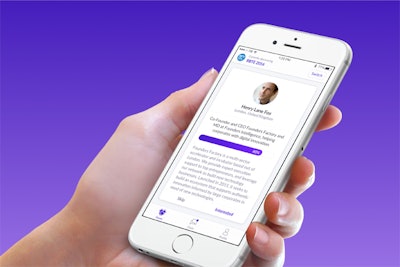
Grip is an app to facilitate networking at events. Similar to dating apps, Grip requires both parties to express an interest before connecting. Once two people both express an interest, that triggers a “handshake” in the app and the two people can then communicate through in-app messages to share ideas and arrange a meeting. Users can log in with their LinkedIn or Facebook accounts and also add a description about their interests. The system’s algorithm uses that data to recommends people to meet. Users can also join any of the more than 500 networking communities that exist within the app. In addition to the Grip app, the company also offers a white label version for events and planners can also integrate Grip’s API into their existing app or website.
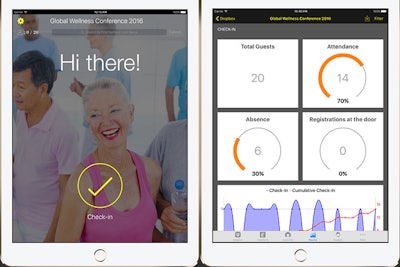
Guesto is a new app that launched in October that allows planners to check in guests and print name tags using an iPad and small label printer. Planners can create custom badges with their event’s logo, and import events and guest lists from Eventbrite or a simple spreadsheet. Guests can be identified for check-in either by searching for their name or by scanning a barcode or QR code.
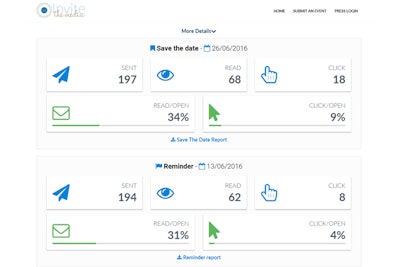
Invite the Media is an online system to get journalists, bloggers, and influencers to an event. Planners fill out a form to indicate the date, time, location, and registration page of the event as well as details about the type of event (a conference, trade show, or fund-raiser, to name a few examples) and social media links and hashtags. The system then selects who in its database of more than 1 million media representatives in 150 countries would be suitable to receive the information. Reporters opt in to the media list so when an event matches their profile of interests it also triggers an invitation. The system sends reminder emails and provides tracking and metrics at the conclusion of each campaign. The company reports it has sent more than 450,000 invitations to date. Pricing ranges from $79 to $499.

Swoogo is a comprehensive planning system to manage an event’s website, registration, and marketing. Users choose a theme and drag-and-drop content widgets to create the event website. The system’s setup wizard can be used to create the registration form, designate registrant types, and add sessions. Pricing is based on how many people have access to create and edit events, ranging from $500 for one “full user,” to $2,000 for eight. All plans can be used for an unlimited number of events and registrations.

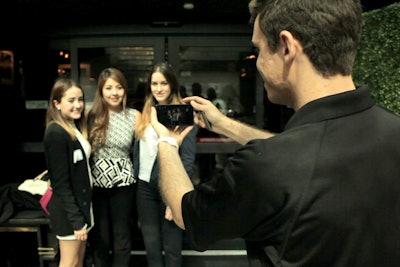
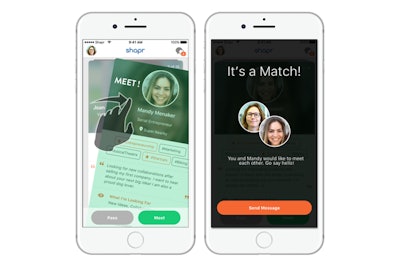
Shapr is a free app that people can use throughout the year to meet others with similar business interests. Users create profiles that include their job title and company, a short bio, and interest tags, and then the app uses an algorithm to produce a list of 10 to 15 people they may want to meet. Planners who want their attendees to use the app for networking at their events create a hashtag that users can add to their interests so the system can identify people who are at the same event. Users swipe left to delete a suggested contact or swipe right to show interest in meeting. When two users both swipe right, the connection is made, and they can message each other within the app to set up a face-to-face meeting on site.

